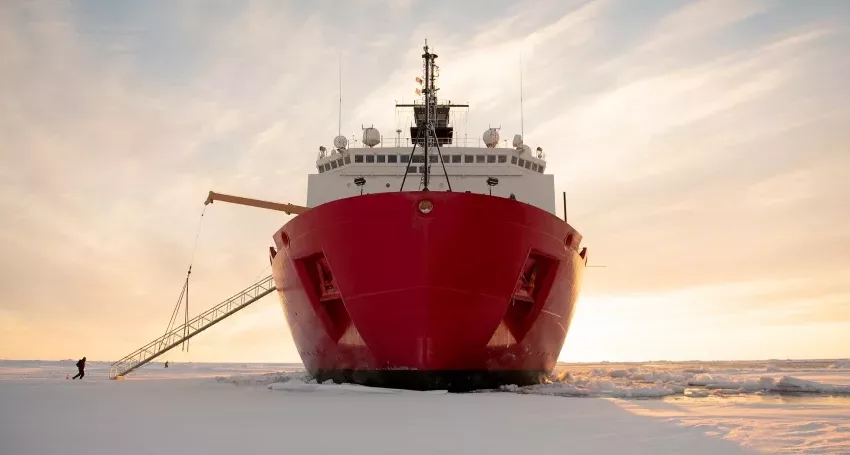
As U.S. Shifts Arctic Strategy to Counter Russia, Allies Offer Valuable Info
The Arctic has received relatively little military attention since the Cold War, but U.S. strategy is shifting toward a renewed focus on the region, reflecting increasing Russian military activity there.
Recent Arctic strategies by the Army, Air Force, and Navy emphasize ways of improving operational capabilities and capacity in the region. In addition to its own efforts, U.S. forces could benefit by leveraging the knowledge and capabilities of partners and allies with extensive Arctic experience.
The extreme Arctic environment requires specialized equipment and procedures. Fluids ranging from lubricants to medications readily freeze, solids become brittle, and electronics fail. People who tread into this environment wear specialized clothing simply to survive, but which encumbers dexterity and operational effectiveness. Extreme weather whips up the seas while piling ice onto ships and equipment and enveloping crews in blinding fog.
On land, runways and roads can be slick with ice, and the soil can be impenetrable to tent spikes. At the top of the world, unique polar ionospheric effects curtail communications, as do the vast distances within the region and from it to the rest of the world. Near-continuous darkness or sunlight can influence operational hours. Sparse infrastructure constrains the ability to provide logistical, medical, rescue, and other support. Overall, materiel, concepts of operation, tactics, and procedures designed for lower latitudes require considerable revision for the Arctic.
U.S. forces could benefit by leveraging the knowledge and capabilities of partners and allies with extensive Arctic experience.Share on Twitter
The United States does not need to meet these formidable, regionally-specific challenges alone. Allies and partners with Arctic territories have adapted modern warfighting equipment, techniques, and procedures for this environment and have been operating in these environments for decades. U.S. forces could apply lessons from, and use the same equipment as, these nations. Such cooperation is ongoing and takes the form of training, exercises, and bilateral and trilateral agreements. At any given time, about 1,000 U.S. Marines are operating in northern Norway on a rotating basis. The United States has also recently signed agreements with Norway to build facilities on Norwegian bases.
Though Sweden and Finland are not NATO members, they cooperate closely with the alliance and the United States; both countries have facilities that the alliance can use for training, medical support, and logistics. Finland is a leader in icebreaker ship building, while Sweden has some of the quietest and most effective submarine fleets, even besting a carrier task force in exercises off the Pacific Coast.
Denmark (which has sovereignty over Greenland), Canada, and Iceland collectively provide specific capabilities, basing, and infrastructure for logistics, communications, domain awareness, medical support, and rescue. Norway, Denmark and Canada also work with their Indigenous populations to strengthen Arctic awareness and improve operational procedures in this extreme region, policies that could be emulated in the Alaskan Arctic.
Continued learning from others may require a shift in mindset for U.S. forces, who are used to being the experts in the room and advising others on operating effectively.Share on Twitter
Other cooperative efforts include memoranda of understanding, like those signed to conduct collective polar research, development, test, and evaluation projects through the International Cooperative Engagement Program for Polar Research. All of these nations contribute to intelligence, surveillance, and reconnaissance. Non-Arctic NATO nations such as Britain, the Netherlands, and France also operate and contribute frequently in the Arctic. All of these nations’ hard-earned experiences in the region are valuable not only for what they provide to the alliance, but also because the United States can continue to learn from them, by copying their equipment and tactics to survive and operate in a harsh, remote region.
This continued learning from others may require a shift in mindset for U.S. forces, who are used to being the experts in the room and advising others on operating effectively. However, continuing to expand Arctic collaboration, mutual support, and learning opportunities with U.S. allies and partners may enable U.S. forces to efficiently and rapidly become more capable in the region. Doing so may also improve interoperability as nations converge on shared best practices. These ongoing efforts could enable the United States and the wider NATO alliance to counter Russian threats in the Arctic and maintain the security of this extreme portion of the globe.
Fabian E. Villalobos is an associate engineer at the nonprofit, nonpartisan RAND Corporation.
This commentary originally appeared on United Press International on September 24, 2021. Outside View © 2021 United Press International.
Commentary gives RAND researchers a platform to convey insights based on their professional expertise and often on their peer-reviewed research and analysis.
This blog post is part of a series by the RAND












